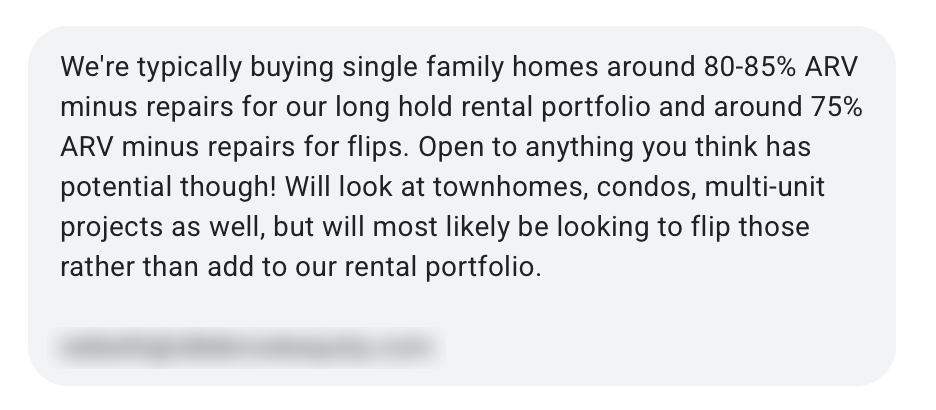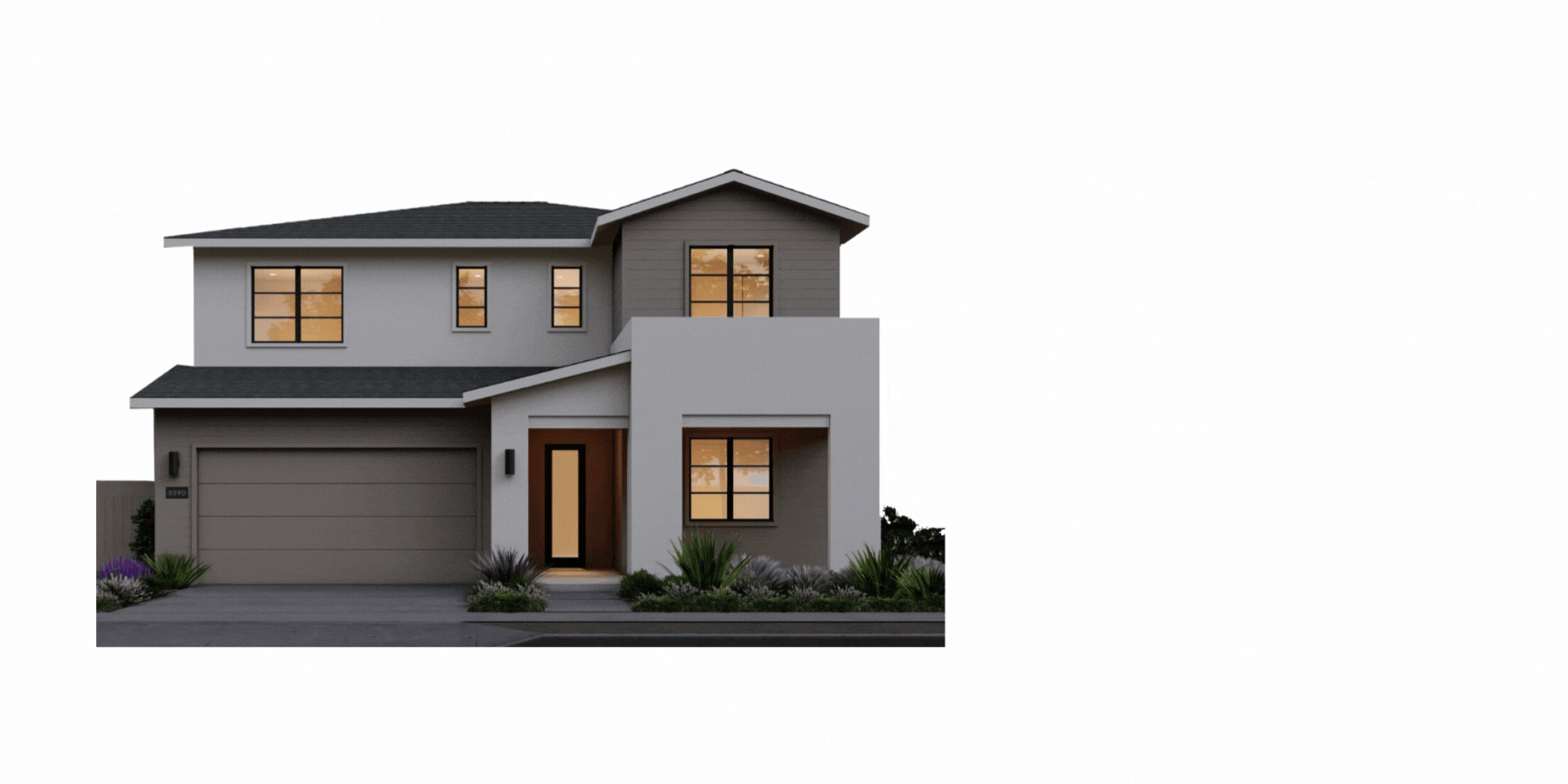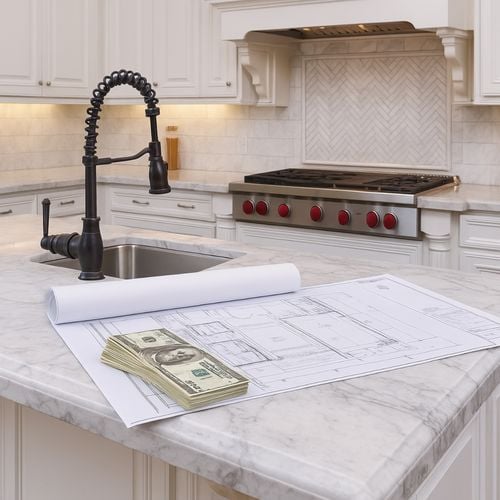If you own a home in the Bay Area or Silicon Valley that you’re thinking of selling, you’ve probably asked yourself a very common question at least once: Should I do a pre-sale renovation before I list? The idea is seductive. Update the kitchen, refresh the baths, maybe go all-in on a whole-house facelift, then reap the rewards when the offers pile up. In one of the most competitive housing markets in the country, it seems like a no-brainer—until you look at the numbers, the way the MLS shows the differences between “as-is” sales versus renovated homes, and, crucially, how professional house flippers (who do this day in and day out, for their daily bread) buy, renovate, and sell homes.
I hate to bury the lede, so I’m going to come right out and let you know what you’re in for here. This article is the long version of what I tell sellers every week: in most cases, pre-sale renovation is a poor investment. It can lift your sale price, but usually doesn’t increase your cash out at closing once you subtract actual costs, delays, carrying expenses, and the risk of missing your market window. The proof comes from national remodeling reports, current flipping profitability data, and the behavior of professional real estate investors (i.e., flippers).
Let’s walk through the logic, the data, and a pragmatic Bay Area playbook that reliably puts more money in your pocket upon resale without turning your home into a jobsite.
The MLS Represents The Open And Fair Market
The Multiple Listing Service (MLS) is the privately owned, (mostly) publicly-accessible, professional database agents use to market and cooperate on property sales. When your home is listed on the MLS, every buyer and agent in the Bay Area and Silicon Valley can see it; its details syndicate to consumer–facing portals like Zillow; and the home’s pricing is tested by the broadest pool of active buyers. Because the MLS is the central marketplace, it’s where buyers, agents, and appraisers triangulate value with the best available information. In short, it’s how your property is exposed to the open market and how the market pushes the price toward what informed, ready buyers will actually pay, in other words, how sellers are assured of getting fair market value.
That single point matters more than anything in this conversation. If you list on the MLS, sale prices are pulled into alignment by open-market competition. That’s fabulous for market-rate sellers, but it’s terrible terrain for anyone hoping to buy at a discount and resell at a premium after paying for a renovation. The MLS shrinks that discount to near zero, which is exactly why the professionals who live or die on resale spreads (flippers) almost never buy homes listed for sale the MLS, unless there’s a catch such as I’ll cover in a moment.
What the Remodeling Data Actually Show
Every year, independent industry reports tally real-world returns on remodeling. If pre-sale renovation were a reliable moneymaker, these reports would show widespread cost recovery above 100%. They don’t.
Start with the often-cited Journal of Light Construction Cost vs. Value Report. The latest editions show a pattern that Bay Area and Silicon Valley sellers need to hear plainly: exterior replacement projects tend to deliver the highest ROI, and even then, only a handful crack or exceed full cost recovery; most popular interior remodels fall short. For example, the 2024 report shows a minor kitchen remodel (midrange) recoups about 96% of its cost on average—close, but still not full payback. In the same 2024 dataset, items like steel entry doors, garage doors, and manufactured stone veneers punch above their weight (barely), but big interior overhauls typically don’t. In 2025, the trend remains: exterior replacements lead, and large interior remodels are “too subjective” to reliably return dollar-for-dollar at resale. That is precisely the opposite of what a would-be flipper (or seller-as-flipper) needs.
Then look at NAR’s Remodeling Impact Report. NAR emphasizes “joy scores” (how happy a project makes you) alongside estimated cost recovery if the home sells. The message: many projects feel great to live with but don’t return all their cost at sale. Some items might approach or hit 100% in certain markets and years, but the average seller doing a $75,000–$150,000 interior remodel before listing is highly unlikely to see those dollars come back in full. That’s a national lens, yes, but it mirrors what we see locally when buyers want to personalize interiors anyway.
In plain English: the best national data keeps repeating the same tune: pre-sale renovation isn’t a reliable profit engine, especially for big, design-heavy interior work.
What Professional Flippers Do Is All The Proof You Need
If it were realistic to buy a house at fair market value on the MLS, do a quick refresh of the kitchen, bath, and floors, and then reliably resell for a profit, you would see flippers scooping up homes they find on the MLS constantly. They’d spend all day writing full-price offers from their laptops and skip all the guerrilla marketing.
That’s not what happens. Not at all. Have you ever seen this happen in your neighborhood, or anywhere near your neighborhood? I didn’t think so.
Instead, flippers pour time and money into off-market sourcing: postcards, We Buy Houses signs, ringless voicemails, robocalls, and endless networking with wholesalers, probate attorneys, and landlords. Why? Because they need to buy well below market in order to have any realistic spread after renovation costs, carrying costs, and sales friction. The MLS erases that spread. In today’s market, even when flippers do find deals, margins have been thinning: ATTOM’s 2025 flipping reports show gross returns hovering near 25% nationally, the lowest since the Great Recession—before subtracting rehab costs, financing interest, taxes, insurance, and commissions. If the gross return is 25% and your all-in costs eat most of that, you can see how tight the math is—even for pros.
Sure, a 25% (gross) return on investment sounds great – actually, it sounds amazing. That means that in the Silicon Valley, if you spent $200K renovating your home prior to resale, you could pick up an extra $50,000 in profit when you sell – and that is the shtick that many REALTOR®s will sell you. They’ll tell you that and say things like this will effectively pay the cost of their fee, but actually, doing that work typically ends up taking even more of a bite of their proceeds at closing. And when you dig into the ATTOM report, you will see that:
The typical investor paid $260,000 for a home they flipped in the first quarter of 2025 and sold the property for $325,000.
This at a time when the median U.S. home price is around $400,000. This means that flippers were paying about 35% below the median home price – and still re-selling for quite a bit below that. What this tells me is that yes, these flippers were in most cases paying far below fair market value for homes when they acquired them off-market, and still selling them at a pretty low price point, even on the wide open market.
Actual Message From a Flipper
Don’t believe me? Here you see an actual text message from a house flipper I got the other day. He texted me, as many of them do throughout the week, asking if I had any off-market deals for him. I asked him what his “buy box” is, so I know what kinds of properties they are looking for. You can see his text message below. “ARV” means “as-repaired value”.

So what they’re saying is, when they are buying to hold long-term, they only pay 80-85% of “as-repaired value” (but subtracting their estimated repair costs). But it gets worse: for homes that they do plan to flip – and honesty, they are probably going to flip 90-95% of the properties they buy – they only pay 75% of as-repaired value, minus repair cost. Obviously, the difference between as-is “fair market value” and “as-repaired” fair market value are different, but after accounting for the cost of those repairs, the spread is not that great. In other words, here’s all the proof you need to see that yes, flippers need to pay way, way below fair market value to get a profitable deal done.
And here’s the small print on the rare, successful flips you do see where the homes were sourced off the MLS: they tend to involve homes so rough they cannot be financed in their current condition. When a property won’t qualify for conventional lending, the buyer pool shrinks to cash and hard-money buyers. That’s when a flipper can step in, pay far less than a loan-eligible comp, fix the problems, and bring it back to market with financeable status.
The discount here isn’t “free money”; it’s a function of limited buyer access and real risk. Those aren’t typical Bay Area “pre-sale renovation” scenarios; they’re heavy-lift rehabs with meaningful hazard. The very fact that investor margins are now at multi-year lows underscores the point: there simply isn’t easy profit to be had from rehabs at fair market prices.
The Bay Area & Silicon Valley Wrinkle: Carrying Costs and Timing Risk
If you’ve lived here longer than five minutes, you know time is expensive in Silicon Valley. A six-month renovation delay isn’t just inconvenient; it’s costly. While you’re waiting for permits, waiting for subs, or waiting for tile that’s back-ordered, you’re still paying property taxes, insurance, utilities, interest, and the cost of dead capital stuck in the house that could be earning far more money elsewhere. This is why pre-sale renovations so often disappoint local sellers: even when the finished home looks gorgeous, the net doesn’t look so hot once all the costs are added up.
Timing risk bites in another way. Our region’s demand is intertwined with the stock market and tech employment. If you start a big project during a market high and list into a rate spike, IPO pause, or sector layoff news cycle, buyers tighten; homes take longer to sell; your “best case” becomes a “meh case.” Flippers price this risk into their offers by insisting on steep discounts. Most homeowners who choose a pre-sale renovation, by contrast, don’t price the risk; they feel it later when the net proceeds aren’t what they figured they’d be.
“But my neighbor remodeled and did great!”
There are three common reasons a neighbor’s story sounds like a contradiction to everything I’ve just said:
- Sweat equity: they did much of the work themselves and effectively “paid” with time and skill instead of cash. That can pencil out because labor is a huge line item. It’s the one genuine exception to the “pre-sale renovation rarely pays” rule. However, for this to work out, you really have to know what you’re doing. Don’t expect your buyer to pay top-dollar for shoddy work and sub-par materials.
- Strong tailwind: they listed during a brief pocket of intense demand or sub-6% rates and benefited from multiple bidders pushing the price higher. The market lifted them, not the renovation alone.
- Selective accounting: people love telling the sale price and glossing over the costs, delays, credits, inspection repairs, and “we had to throw an extra $18,000 at X.” If you tracked the full stack, the net may not be what’s being remembered.
When I find there’s a neighbor who “fixed up” and remodeled their home, they often do it over time, rather than immediately prior to resale. They start with a bathroom here, then maybe windows, flooring, a roof and then the kitchen – a process that could, and often does, take years. While it may seem that it was the remodeling that pushed up the price, in point of fact, it’s really the land underneath the house that’s been going up in value for those five or so years, accounting for the bulk of the price premium they believe the improvements yield.
What Work Consistently Pays Off Before You Sell in Silicon Valley
If pre-sale renovation is usually a bad bet, what’s the smarter plan for Bay Area and Silicon Valley homeowners?
Think “low-hanging fruit” and “finance-friendly.” Decluttering, deep cleaning, paint touchups, bright lighting, fresh landscaping, minor handyman fixes, and correcting health/safety or issues that would get flagged by a loan underwriter reliably improve marketability. The truth is, maximizing your investment in pre-sale home preparation is largely about eliminating things that all buyers hate, such as:
- Clutter & Crowded Rooms
- Odor (e.g. from pets, mold, smoke, heaving cooking smells)
- Dark rooms lacking natural light
- Overgrown landscaping
- Dirt and Grime
- Peeling and Flaking Paint
- Poor curb appeal
Doing these quick-and-easy fixes will reduce buyer friction and which dramatically broadens your buyer pool and helps the MLS do what it does best: deliver fair market value by exposing the home to the maximum number of ready buyers. Notice how this aligns with the Cost vs. Value data: many of the top ROI items are simple exterior or entry upgrades that boost first impressions, not costly custom interiors that usually end up being big money losers.
That doesn’t mean “never spend.” It means spend strategically where buyers will happily pay for the value proposition your home honestly presents. Replace the soiled carpet, take care of the mold, repair the leaky shower head, add a clean, modern light fixture in a dim hallway; trim the hedges that are eating half the front window. These moves don’t generate Instagram applause, but they do help generate offers, faster.
Ask Any Economist, They’ll Tell You The Same
Behavioral economics even backs this up. Prospect theory is one of the most famous ideas in behavioral economics, introduced by Daniel Kahneman and Amos Tversky in 1979. It tells us that people feel the pain of a loss about twice as strongly as they feel the pleasure of a gain. In real estate terms, that means buyers are far more motivated to avoid things they hate than to pay extra for things they like. A cluttered garage, a funky odor, or a moldy ceiling screams “loss” to a buyer—it makes them worry about hidden problems, extra costs, and future headaches. On the other hand, your $40,000 imported tile bathroom might register as “nice,” but it won’t exert anywhere near the same pull as does elimination of the negatives. That’s why addressing the obvious turn-offs—removing clutter, deep cleaning, fixing safety issues—has a much higher return than rolling the dice on what finishes might bring someone joy. Avoiding pain beats chasing pleasure every time, hands down, and by a mile.
A Quick Math Exercise
Let’s say a San Jose home could reasonably fetch $1,600,000 today “as-is.” A contractor’s bid says you can remodel the kitchen and both baths, refinish the floors, replace interior doors, repaint inside and out, and update all the lighting in the house all for the low-low price of $150,000, in just three months or so. Your REALTOR® tells you that doing the work should, conservatively, push the sale price to $1,800,000 (maybe more!), and they have some comps to show you which justify this extrapolation.
If everything goes perfectly (rare), you figure that’s at least a $50,000 bump to the bottom line at closing. Although you have to spend $150,000 to get it, it seems like it’s a risk worth taking. But here’s how it’s likely to pan out:
- It turns out to take longer than expected; three months turns into four.
- Four months of property tax, insurance, utilities, yard care, and interest (call it $20,000 depending on your situation).
- Surprise change orders or material cost overruns ($10,000 for a budget this size would not be at all unusual).
- You don’t hit the market quite right, so it only sold for $1,750,000 – just 2.8% below anticipated sale price, but that wipes away all your anticipated profit, and then some.
- You recoup most of your $150,000 “investment,” maybe – but when you add it all up…
- The $50,000 bump in your cash-at-closing you were expecting has turned into a net $30,000 loss.
- And that’s not counting the ~ 5% commission on that $150K higher sale price ($3,750), along higher transfer taxes and other closing costs.
Now compare that with doing a quick $15,000 punch-list: decluttering and a few dump runs, lighting improvements with inexpensive LEDs, landscaping refresh, deep clean, and a quick makeover on the curb appeal. It’s not unreasonable to expect that doing so would lift the sale price by $50,000 or so through broader appeal, more attractive photos, fewer things that buyers say “ewww” about, and therefore more bidders.
But because you’re smart, you understand that you should employ strategic pricing, and list your home for a flat $1,600,000. Yes, it’s lower than you now expect the home to sell for, but you do that because you know that if you were to set the list price at the $1,650,000 you think it’ll sell for, you would cause your property to be visible by fewer buyers (since buyers search in ranges of prices that typically begin and end on $100,000 increments in this price range).
Because you chose to address only the low-hanging fruit, you’re able to get your home ready for market in just a couple of weeks, so you hit the season just right, when the balance of supply vs. demand is solidly in your favor. Your home is clean, decluttered, well lit, with good curb appeal, and trimmed landscaping. Buyers love it since there’s little to hate, and it has a very attractive price. You get several offers, and your agent is able to work the buyers against each other to boost the price up to $1,675,000.
Yes, $1,675,000 is a lower sale price than $1,750,000 – but which path nets more? Which one is less stressful and less risky if the Fed surprises the market before you list?
Tackling the quick and easy low-hanging fruit, and wisely setting a more-visible lower list price, nets you a tidy $90,000 more, even with a lower sale price. And you get it more quickly, easily, and predictably, versus the costly, time-consuming, and much more risky major pre-sale renovation project…that will in all likelihood end up costing you tens of thousands of dollars.
Current Flipping Profitability is Your Caution Sign
Even for professionals who are buying at discounts and who do have wholesale material pricing, crew relationships, and speed, margins are historically thin, especially right now. ATTOM’s 2025 reports show gross ROI ~25%—the lowest since 2008. And remember, “gross” is before the real checks get written to trades, lenders, and brokers. If the hardcore professionals are scraping 25% on the surface, that tells you the underlying spread between a fix-up property and a retail-ready resale is tight. If you start from fair market value (because you bought years ago and the MLS will deliver market value at sale), adding a big, risky pre-sale renovation on top of that isn’t likely to create a dependable profit.
The Sweat-Equity Exception
There is one path where pre-sale renovation can work: doing a chunk of the labor yourself to slash costs. That’s the old-school way previous generations added value. If you (or your close network) can competently handle demo, paint, trim, tile, basic electrical and plumbing with the proper permitting and sign-off from the municipality, you can perhaps compress the budget enough to tip the ROI line.
But the Bay Area reality is long hours, commute time (even with hybrid work), and family commitments. Most homeowners here don’t have the time to do this safely, well, and fast, and the opportunity cost of spending nights and weekends working on your house, after your 50+ hour work-week, is high. And, let’s face it: this isn’t the 1970s when Silicon Valley wasn’t Silicon Valley yet, and it was filled with blue-collar workers. Most homeowners today have barely ever swung a hammer or so much as plugged in a disc sander.
That’s why for almost every homeowner today in Silicon Valley, the smarter move is to avoid turning your final months in the home into a construction project and channel that energy into simple marketability-maximizing prep. I know, it’s not sexy – but it is effective.
A Bay Area–Specific Blueprint That Actually Maximizes Net
Here’s how I advise Silicon Valley sellers who want the highest net, not just the highest sale price:
Start with the demand-expanders: cleanliness, light, space, safety. Empty every third thing out of closets and cabinets so storage looks generous. Swap dim bulbs for bright, warm LED lamps. Trim shrubs away from windows and pressure-wash paths so the approach feels crisp. Address trip hazards, missing smoke/CO detectors, bad GFCIs, and anything a lender or appraiser will flag. Make sure every door latches, every window opens, and every light switch works. These items lend your home a feeling of being well maintained, loved, and buttoned up. Buyers will feel the seller cares about the home, and will be less inclined to lowball it.
Next, consider selective upgrades with proven ROI. If the garage door is dented, rotting or rusting, replace it. If the front paint is scratched or faded, repaint or refinish it and update the hardware. If your kitchen is basically fine but dated, a minor refresh—hardware, faucets, newer appliances, and lighting often photographs and shows almost as well as a full gut at a fraction of the cost. The Cost vs. Value data is your compass here: notice how many of the top returns are modest, exterior-facing, or “entry experience” projects, not major custom interiors.
Finally, calibrate expectations with your agent using today’s comps (not last spring’s headlines or what you neighbor’s house sold for 18 months ago), and time your listing for a week when pre-qualification pipelines are full and your target buyer cohort is active. The aim is to let the MLS and the invisible hand of the market do the heavy lifting by giving it a clean, bright, safe, and financing-friendly product buyers can bid on confidently.
Bringing it Home: Why this is Proof, Not Just Opinion
To recap the proof points that pre-sale renovation rarely pays off in the Bay Area and Silicon Valley:
- The MLS functions as the open marketplace that produces fair market value, which is what you want – but it isn’t a mechanism to get buyers to pay for “upgrades” that they don’t especially care for.
- The Cost vs. Value reports show most upgrades don’t recoup full cost; exterior/entry replacements have stronger ROI, but these projects are the exception, and barely exceed their cost in any regard.
- NAR’s Remodeling Impact report reinforces that the “joy” of an upgrade isn’t the same as resale payback; cost recovery often trails spend. And just the fact that they need to show the purely subjective “joy” impact instead of positive return on dollars invested tells the whole story.
- Professional flippers spend heavily to find off-market discounts because buying at fair market value leaves too little spread; the current average gross ROI of ~25% (lowest since 2008) underlines how thin the margins are even including the fact that they buy at heavy discounts.
Stack those together, and you have an airtight case. If profitable flipping from MLS-priced homes plus renovations were easy, every professional investor would do exactly that. But they don’t. They can’t. The market simply won’t allow it. And if the professional flipper investors can’t count on it, a typical homeowner taking on contractor pricing, Bay Area timelines, and carrying costs is even less likely to come out ahead.
The Bottom Line for Bay Area & Silicon Valley Sellers
Major “pre-sale renovation” makes sense only in narrow circumstances: you’re solving financing blockers or you’re adding sweat equity by substituting your labor for cash. And yes, there are edge cases where it is possible to profitably renovate your home prior to sale, but these cases are relatively are – and to know if your home might be one of these cases, please reach out to me. For everyone else, the highest-net strategy is simpler and safer: clean, declutter, brighten, deodorize, and remove obstacles to financing. Then let the MLS do what it does best—gather the largest pool of buyers and push to fair market value through the brutal competition of the Silicon Valley marketplace.
Silicon Valley Luxury Homes for Sale
2
3
4
5
6
7
8
9
10
11
12
13
14
15
16
17
18
19
20
21
22
23
24
25






